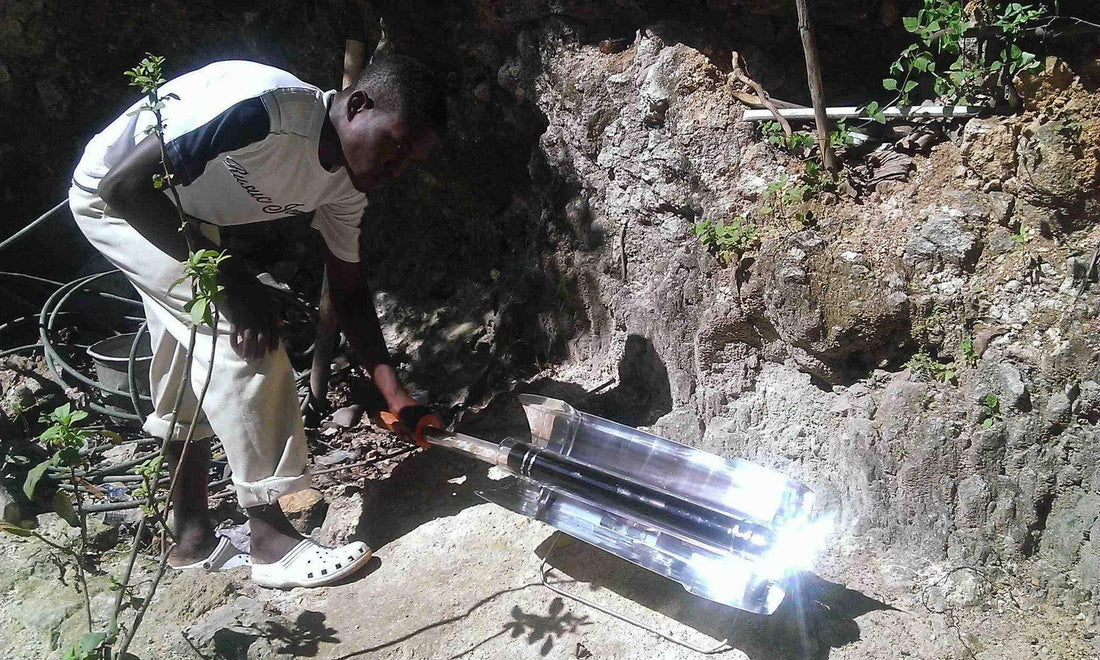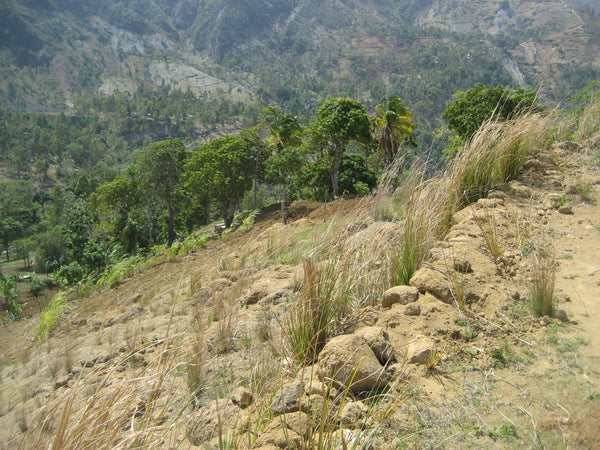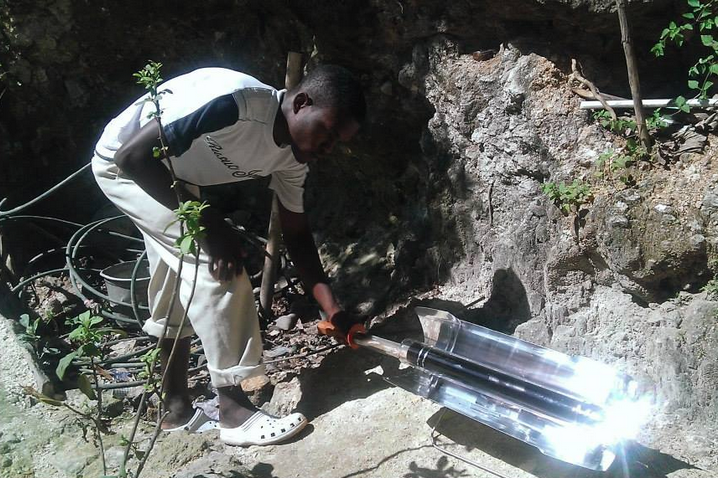
Our close friend and Permaculture educator, Braden Trauth, represented the GoSun in the rural mountains and southern coast of Haiti on a recent three week trip this Fall. His time was split between teaching permaculture, ecological literacy and facilitating research about the GoSun with local communities. He has been working with the farming community of Timo, 1.5 hours southwest of Port au Prince for several years now with the NGO, Women and Childrens Hope Foundation. He has trained farmers in Permaculture and Agroecology to teach others in strategies to manage soil erosion and developed comprehensive methods to transition them into these farming methods. They has been collaborating with Heifer International, USAID and the Haitian Ministry of Agriculture to further their impact.
A Timo hillside that has been eroded down to bedrock after first deforestation and then erosion from annual agriculture and over grazing - B. Trauth - 2014
Testing:
Bringing the GoSun to Haiti was very constructive and inspiring, giving us the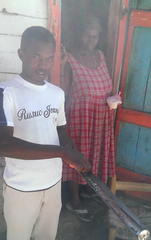 foundation for future design and business development work in developing markets. It taught us a lot about the importance of such technology in a place so dependent on wood fuel that is unsustainably harvested due to population stress and bad management practices. This is one of the fundamental challenges to solving Haiti's soil erosion challenges and thus long term sustainability. These challenges carry such intertwining complexities, however, each piece that can be resolved unravels it that much more to make the lives of Haitians that much better and more sustainable.
foundation for future design and business development work in developing markets. It taught us a lot about the importance of such technology in a place so dependent on wood fuel that is unsustainably harvested due to population stress and bad management practices. This is one of the fundamental challenges to solving Haiti's soil erosion challenges and thus long term sustainability. These challenges carry such intertwining complexities, however, each piece that can be resolved unravels it that much more to make the lives of Haitians that much better and more sustainable.
On the Ground:
It was tested in two regions of Haiti, Timo in the south Central region being the first and Sadhana Forest in Anse A Pitre in the southeast of the country being the second. Timo had quite a bit more rain than Anse A Pitre leaving it a little better in terms of forest regrowth. Unfortunately, due to population pressure, the hills of Timo have been deforested and eroded, leaving many of them unable to regrow. Anse A Pitre, being much dryer, is more of a cacti laden desert, leaving little to be desired in terms of cooking fuel. 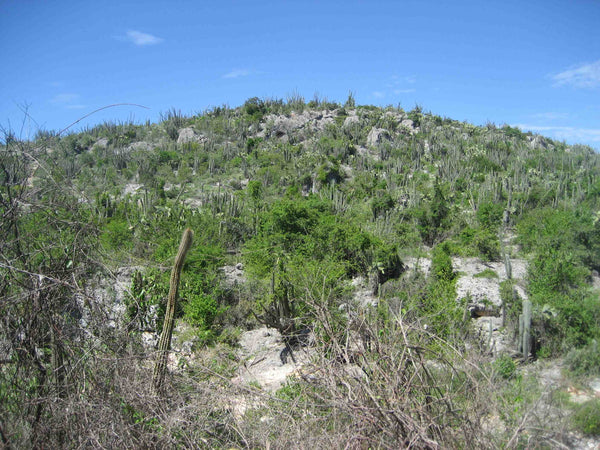
The Dry Cacti Laden Hillsides of Anse a Pitre - B. Trauth 2013
In both locations, the GoSun's reception was extremely positive, whether sunny or cloudy, indicating a real potential and need for GoSun products in this developing market. Initial criticisms from the communities were along the lines of what we were expecting, capacity and cooking style being the main hurdles, both of which will be addressed in future product development. However, they loved the fuel-less ability to cook at temperatures that were extremely functional for their needs, especially with the free time it afforded from tending a fire. It proved its potential as a functional source of cooking, addressing one of Haiti's most pressing challenges. As put in the words of a volunteer from Sadhana Forest Haiti, a permaculture project visited by Braden and his students on the southern coast of Haiti:
"Now we use it whenever we can for dry roasting peanuts, absolutely brilliant! We gave a demonstration to two ladies yesterday... They were both saying they needed a GoSun...Needless to say, all of us.. are very happy now we can make our own healthy, solar roasted, peanut butter!!"


